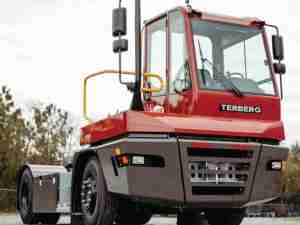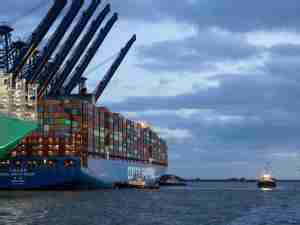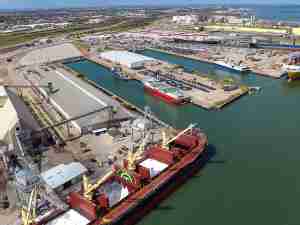“With the completion of upgrades to the Panama Canal in 2014, the Canal will be able to handle 10,000 TEU (twenty-foot equivalent unit) vessels,” says Chuck Dillerud, river transportation consultant and author of the COB transportation operating and business plan study. A vessel of this size would be able to hold a maximum of 10,000 twenty-foot containers.
“Suddenly, the Gulf Coast—where barges go—becomes far more attractive for containers that would come down the Illinois/Mississippi River system by COB,” he adds.
In the meantime, COB programs are currently operating successfully in France, as well as in the Pacific Northwest along the Columbia River.
These facts results indicate opportunity for Illinois growers.
Container Movement
The study had a number of objectives, including:
1. To determine whether it is feasible to use river equipment—towboats and barges—to move empty containers from the Joliet area hub to Illinois River ports within the state’s prime soybean growing areas and move loaded containers back again.
2. To use river equipment to move loaded containers from the prime soybean growing areas adjacent to the Illinois River to Gulf Coast container ports for direct loading on ocean container vessels.
Dillerud offers some intriguing conclusions and recommendations following his investigation.
For example, currently, significant volumes of grain are trucked to the Joliet area to be loaded onto containers that are sent by rail to the East and West Coasts. Essentially, the grain is moving to the containers. Meanwhile, during 2011, only about 100 containers were transported by river from the entire length of the Illinois River and the Upper Mississippi River above St. Louis. A COB program would change all that.
The study suggests that a COB shuttle program can be feasibly operated between the Joliet area and Central Illinois River Ports using dedicated towboats and barges. The minimum scale begins at 200 TEUs per week (or 200 twenty-foot containers) and he notes that could be doubled without a corresponding increase in capital equipment and is scalable to almost any maximum volume.
“The resulting cost to reposition containers from the intermodal hubs to and from Central Illinois growing areas by barge could be significantly less than repositioning them by truck,” says Dillerud.
Additionally:
• A COB shuttle program operating from Peoria to and from New Orleans and/or Houston using dedicated towboats and standard jumbo covered-hopper barges can be feasible with a minimum volume of just more than 350 TEU (or 350 twenty-foot containers) per month at rates that are less than either shuttle rail or bulk plus container loading at Gulf of Mexico locations—and competitive with container rail to the west coast.
• The feasibility of a Gulf COB program like this one also benefits from non-time-sensitive bulk commodity backhauls, like dry fertilizer or road salt.
• Finally, an organization structure is needed to operate either (or both) of these COB programs. The study suggests developing a shippers association similar to the Midwest Shippers Association, but extending to actually operating the COB venture.
Biodiesel benefits
A third objective of the study was to determine the efficacy of fueling river towboats in the COB program with high ratio (B80+) biodiesel.
Results show that COB program towboats can, when properly equipped or with modification, operate on high ratio biodiesel. Dillerud actually expects very few modifications to be needed.
In addition, depending on the status of the blender’s credit and renewable fuels credit, towboat biodiesel may be more competitively priced than No. 2 diesel. The study notes that this fact was not reflected in the feasibility findings in the previo

_-_28de80_-_939128c573a41e7660e286f3686f2a6e25686350_yes.jpg)








